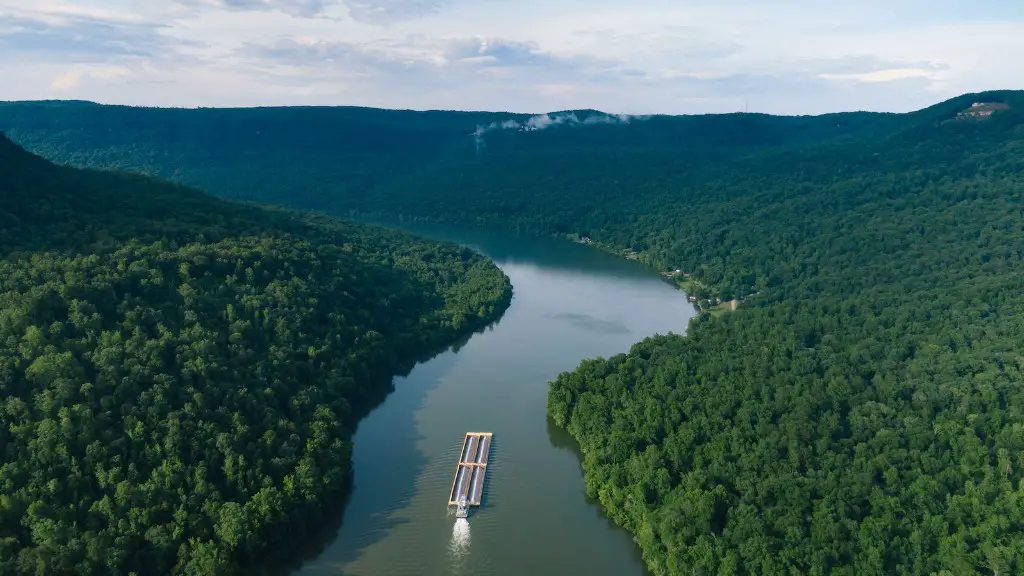An Overview of the Mississippi River and Barge Traffic
The Mississippi River is the second longest in North America and a vital transport thoroughfare for the majority of the United States. The river is a major freight artery for the transportation of agricultural products, manufactured goods, fuel, and other resources. As such, it plays an integral role in helping to support the economy of the Midwest and beyond.
In the transportation sector, barge traffic has historically been an efficient and cost-effective way of transporting large quantities of goods over the Mississippi River. In the past couple of decades, the number of barges on the Mississippi has decreased due to the rise of other transportation methods such as rail and trucking.
However, barge transportation is still an essential piece of the Mississippi River network, as it provides a reliable and cost-effective way to move goods over long distances.
Barges are an important part of shipping and transportation for the commodities that it carries. The Mississippi River has an extensive network of barges and is used to move bulk goods including grain, coal, and lumber. Barges can transport anything from perishable goods to hazardous materials, depending on the cargo.
The Mississippi River also plays an important role in the national and global economy. In fact, it’s estimated that the river system accounts for 15-20% of all exports shipped out of the United States. The river is also used to transport goods from the Gulf of Mexico to ports up north, connecting international trade with inland cities.
Safety Standards and Regulation
The safety of barge traffic is of the utmost importance, and the US Coast Guard is responsible for monitoring and regulating barge traffic along the Mississippi River. The Coast Guard is responsible for ensuring that the barge traffic is in compliance with established safety regulations and guidelines.
The Coast Guard inspects barges for structural issues and cargo hazards that could pose a danger to navigational safety. They also ensure that the barge operators are adequately trained and certified.
Barges must adhere to the safety requirements put in place by the Coast Guard in order to operate on the Mississippi River. This includes the passage of regular inspections and the approval of special cargo operations.
In addition to the safety regulations, the Mississippi River is also subject to environmental laws and regulations. The Environmental Protection Agency (EPA) is responsible for ensuring that barge traffic does not negatively impact the environment, as well as ensuring that the crews of the barges are properly trained to handle spills, in the event that one should occur.
Impact on the Economy
Barge transportation on the Mississippi River has been a key part of the US economy since the 1800s, providing employment to thousands of workers and helping to facilitate trade between countries. The Mississippi River’s barge traffic helps keep shipping costs low, making it an attractive option for businesses to move goods.
Barges also help reduce pollution, since they emit fewer emissions than other forms of transportation such as trucks and trains. This has been of particular importance to the environment, as the reduction in emissions associated with barge traffic has resulted in fewer greenhouse gas emissions and other pollutants entering the atmosphere.
Finally, the reduced cost of shipping goods along the Mississippi River helps to stimulate economic activity throughout the US, as lower transportation costs result in lower prices for goods and services.
The Effects of Artificial Restrictions
There are a number of restrictions in place that limit the amount of barge traffic on the Mississippi River. These include locks, dams, and navigation restrictions such as navigation channels and navigational aids (such as buoys and markers).
The locks, dams, and navigation restrictions help to manage the flood levels along the Mississippi River, and help prevent damage to levees and other infrastructure along the riverbank.
However, these restrictions also limit the number of barges that can use the Mississippi River each day. This has resulted in decreased barge traffic over the years, and has had a significant impact on the economy of the Midwest and other parts of the United States.
The navigation restrictions also increase the risk of accidents, as there are fewer barges operating on the river. These accidents can have a serious impact on both the economy and the environment.
Conclusion
Barge traffic is an essential part of the economy of the United States, and the Mississippi River is one of the most important parts of this infrastructure. Barge traffic helps to keep shipping costs low and reduce pollution, yet it is subject to various restrictions.
In order to ensure the safety of barge traffic, it is necessary to ensure that the barges adhere to established safety regulations and guidelines. These regulations are important to ensure the safety of those on board, as well as those near the riverbanks.
Despite the restrictions in place, barge traffic is still an important part of the US economy and will continue to be for many years to come.




